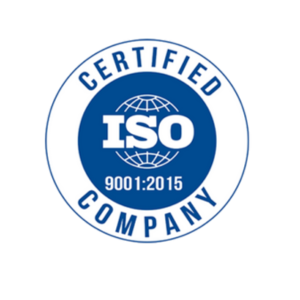
30-Day Lean Six Sigma Green Belt Study Plan (Beginner to Advanced)
If you’ve ever wondered how professionals consistently reduce waste, improve efficiency, and drive data-based decisions within organizations the answer often lies in Lean Six Sigma Green Belt Certification. It’s one of the most recognized professional qualifications across industries for improving processes and quality performance. But can you really go from beginner to Green Belt ready in just 30 days? The answer is yes, if you follow a structured plan and commit to consistent practice. In this guide, we’ll take you through a complete 30-day Lean Six Sigma Green Belt study plan, the concepts you’ll master and the resources that can help you clear the certification exam confidently
Can You Really Complete Lean Six Sigma in 30 Days?
The Lean Six Sigma Green Belt Certification represents an intermediate-level understanding of process improvement using the DMAIC methodology, Define, Measure, Analyze, Improve, and Control. Typically, learners take around 60–90 days to complete the training and prepare for the exam, mainly because they juggle it with work or academics. However, a 30-day plan is entirely achievable if you break down your learning schedule into smaller, manageable chunks and dedicate consistent daily time. This is not about rushing but rather about focused learning, combining theoretical understanding with practical problem-solving. The lean six sigma green belt certification cost can vary depending on the provider, the format (online or offline), and whether the course includes project mentorship. Completing it faster not only saves time but can also reduce additional training expenses, making it an efficient investment in your career.
Who This 30-Day Plan Is For?
This plan is designed for:
- Students who want to enhance their employability with a globally recognized credential.
- Working professionals aiming to implement process improvement in their current roles.
- Freshers who want to demonstrate analytical and leadership capabilities early in their careers.
Whether you’re in IT, manufacturing, or healthcare, becoming Green Belt in India adds a strong differentiator to your resume, especially when combined with hands-on project work.
What You Will Learn in Lean Six Sigma Green Belt?
The Green Belt curriculum isn’t just about memorizing definitions. It’s about learning how to think analytically, make data-driven decisions, and apply proven tools to real-world problems.
DMAIC Framework Overview
At the heart of Six Sigma lies the DMAIC framework, which is your roadmap for problem-solving. Each stage serves a purpose:
- Define – Identify the problem, customer requirements, and project goals.
- Measure – Collect data and establish current performance baselines.
- Analyze – Identify the root causes using statistical analysis.
- Improve – Implement tested solutions to eliminate defects.
- Control – Maintain improvements with standardized procedures and monitoring.
This structured approach ensures every improvement initiative is data-supported and measurabe.
Tools Used at Each Stage
During your six sigma green belt classes, you’ll learn how to use several process improvement tools effectively. Some of the most common include:
- Pareto Chart – Helps identify the most significant issues contributing to defects.
- SIPOC Diagram – Defines the process boundaries (Suppliers, Inputs, Process, Outputs, Customers).
- Fishbone Diagram (Ishikawa) – Visualizes potential root causes of a problem.
- Control Charts – Tracks process performance over time to ensure consistency.
Understanding tools like Standard Deviation also becomes crucial in measuring process variability accurately, a key statistical concept in Six Sigma.
Why Does Real Project Exposure Matters More Than Theory?
Many learners focus too much on theory without applying the concepts in real-world situations. However, Six Sigma’s true value lies in practical application. Organizations prefer certified professionals who can lead small improvement projects confidently. Hands-on exposure helps you connect classroom knowledge to on-ground realities and that’s what makes training green belt six sigma worthwhile. When you apply these methods, you not only enhance your process skills but also demonstrate measurable business impact which recruiters love to see.
Recommended Certifications
Choosing the right certification provider matters. Here are some globally recognized and reliable options:
ClassifyIQ
ClassifyIQ offers a structured and flexible Lean Six Sigma Green Belt Certification program designed for both beginners and professionals. The program combines guided mentorship, live project simulation, and AI-supported learning analytics to ensure clarity at every stage. The platform’s interactive approach helps learners not just pass the exam but master the practical implementation of Lean Six Sigma tools.
ASQ
The American Society for Quality (ASQ) is one of the oldest and most reputed bodies for Lean Six Sigma credentials. Their certification is globally recognized, with rigorous testing and project-based validation.
IASSC
The International Association for Six Sigma Certification (IASSC) provides standardized, exam-based certification that is ideal for self-paced learners who want global credibility.
CSSC
The Council for Six Sigma Certification (CSSC) offers flexible online certification options at affordable rates. It’s perfect for those who want a recognized credential without rigid schedules. When comparing the lean six sigma certification cost, consider not just the fee but also the additional value, such as project mentorship, study materials, and exam retakes.
30-Day Study Plan (Daily + Weekly Milestones)
Here’s your step-by-step guide to mastering Lean Six Sigma Green Belt in 30 days:
Week 1 — Define + Measure (Days 1–7)
Start your journey by understanding what Lean Six Sigma is all about.
- Tasks: Watch introduction videos on Lean principles and Six Sigma history.
- Read about DMAIC concepts and how they structure process improvement projects.
- Learn basic statistics, especially Standard Deviation, mean, and variance.
- Build your first SIPOC diagram for a simple, real-world process (e.g., ordering food online).
By the end of this week, you’ll have a foundational understanding of how to define and measure a process efficiently.
Week 2 — Analyze (Days 8–14)
This week is all about diving deeper into the Analyze phase.
- Learn to use Root Cause Analysis tools such as Fishbone Diagrams and 5 Whys.
- Practice interpreting data collection worksheets and identifying key trends.
- Use Pareto Analysis to prioritize the most impactful issues. At this point, you’ll see how data analysis drives smarter decision-making.
Week 3 — Improve (Days 15–21)
Time to turn your insights into actionable solutions.
- Learn techniques to generate and test improvement ideas.
- Conduct a mini case study, choose a simple business process, apply DMAIC, and suggest improvements.
- Document your findings in a process improvement report.
This week builds your creative problem-solving muscle and prepares you or practical implementation, something employers value highly.
Week 4 — Control + Exam Prep (Days 22–30)
Now you’ll focus on sustaining improvements and preparing for your final exam.
- Learn how to build Control Plans and Standard Operating Procedures (SOPs).
- Study Control Charts to understand variation management.
- Take multiple practice tests to identify weak areas.
- Revise all tools and make flashcards for quick review.
By Day 30, you’ll not only be exam-ready but also capable of leading your own Green Belt-level project.
Free Learning Resources
One advantage of modern learning is access to high-quality free content. Combine these with structured training to maximize results.
YouTube – Get Tutorials on Lean Six Sigma Fundamentals
There are countless free tutorials explaining DMAIC, statistical concepts, and project templates. Use these as refreshers to strengthen your core understanding.
Practice Questions — With ClassifyIQ
ClassifyIQ provides mock tests and practice worksheets that align closely with exam standards. These simulate real exam environments, helping you manage time and stress better.
Enroll With ClassifyIQ Lean Six Sigma Certification Program
For structured guidance, enroll with ClassifyIQ’s Lean Six Sigma Certification Program. You’ll get instructor-led sessions, real project simulations, and community support that make learning engaging and effective. And if you’re interested in specialization, explore areas like Lean Six Sigma in Food Service, which applies Six Sigma principles to reduce waste, improve kitchen operations, and enhance service delivery in the hospitality industry.
Common Mistakes That Stop People from Passing
Even motivated learners sometimes fail to clear their exam on the first attempt, often because of these common mistakes:
- Studying only theory: Six Sigma isn’t about memorizing formulas but understanding how to apply them to solve real problems.
- Ignoring practical projects: Without project work, you’ll struggle to connect theory with application.
- Unstructured preparation: Random YouTube videos may seem helpful but can confuse learners without a proper sequence. Stick to a well-designed course or study plan to ensure continuous progress.
Conclusion
Completing your Lean Six Sigma Green Belt Certification within 30 days is challenging but entirely possible. With discipline, structured learning, and the right guidance, you can build a skill set that boosts your professional credibility and opens doors to new roles in quality management, operations, and data analytics. The benefits of lean six sigma green belt certification extend beyond career advancement, it trains you to think critically, solve problems systematically, and create measurable improvements in any process you handle. If you’re ready to elevate your professional profile, start your journey with ClassifyIQ today, and take the first step toward becoming a globally recognized process improvement expert.
FAQs
Q1. Can I get a job with Green Belt certification?
Ans: Yes, absolutely. A Lean Six Sigma Green Belt Certification equips you with process improvement and analytical skills valued in industries like manufacturing, IT, finance, and healthcare. Many companies prefer candidates with Green Belt knowledge for roles in operations and quality management.
Q2. What salary can a Green Belt expect?
Ans: A certified professional can expect a salary boost of 15–25%, depending on the industry and experience level. In India, Green Belt professionals often earn between ₹6–12 LPA, and the figures are even higher globally.
Q3. Should I start with Yellow Belt first?
Ans: Not necessarily. While the Yellow Belt covers foundational concepts, motivated learners can directly pursue the Green Belt in India if they have a basic understanding of statistics and process management. However, beginners may find Yellow Belt helpful for building confidence before moving up.
Q4. What is the typical lean six sigma green belt certification cost?
Ans: The lean six sigma green belt certification cost varies widely, from ₹15,000 to ₹40,000 in India depending on the provider, delivery format, and inclusion of live projects. Platforms like ClassifyIQ offer high-quality programs at competitive prices with flexible online access.
Q5. What makes ClassifyIQ different from others?
Ans: ClassifyIQ combines AI-based learning assistance, live mentorship, and real-world project exposure, ensuring students not only pass but master Six Sigma principles. It’s one of the most reliable platforms for affordable and effective training green belt six sigma programs.
















